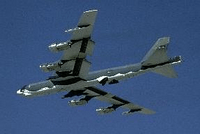The air campaign against Libya is now well into its third month, and there is as of yet little sign of progress on either side. What does this mean for the future of airpower? With the exception of small special forces teams and several warships, the military aspect of the Libyan intervention has been conducted from the skies. Gen. Sir David Richards has now called for an expansion of the air campaign to include leadership targets, with the goal being the removal of Moammar Gadhafi's government. This brings a strategic element to a campaign that has thus far lacked coherence along political, strategic and operational lines. It may also provide yet another test for the strategic conception of airpower, or the idea that airpower can win a war on its own. The debate over the effectiveness of airpower over Libya will inform future policy not just for NATO, but also for the leaders of states that might find themselves subject to Western attack.
Airpower is performing many familiar missions in Libya. From the beginning of the intervention, NATO aircraft established air supremacy by defeating the Libyan air defense system and destroying the greater part of the Libyan air force. NATO aircraft have also undertaken close air support, attrition and logistics-denial missions. These strikes have probably made up the bulk of the effective sorties over Libya and have had a noticeable effect on the ability of Gadhafi loyalists to operate and conduct offensives. Libya's geography is ideal for an interdiction campaign, as transport and resupply are limited to a fairly narrow strip along the coast.
What has been absent thus far, however, has been the strategic use of airpower: airstrikes designed to induce the regime to concede or collapse without reliance on ground forces. The absence of a strategic airpower element to the Libya campaign is odd, given that most recent air campaigns have included strategically oriented targeting and operations. Air planners in the Vietnam War, Gulf War I and the Kosovo War all hoped that the enemy would concede without the deployment of ground troops. This idea still animates much thinking in the United States Air Force (.pdf).

